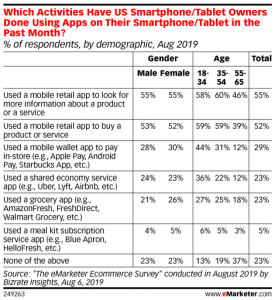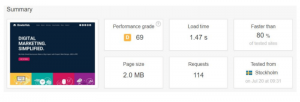 Last week I wrote about the problems in content curation platforms. How we are flooded with lots of content and don’t have a way to filter the good from the bad. Or how the ones we have are not good enough.
Last week I wrote about the problems in content curation platforms. How we are flooded with lots of content and don’t have a way to filter the good from the bad. Or how the ones we have are not good enough.
This week I’m going to talk about what we are doing at Groupiest and what we believe that can be a great addition in discovering content to read and curate across social media, blogs, and all around the web.
There is good content all around the web
First off, let’s clarify what good content means. From a marketing perspective good content for curation is:
- Was written by an influencer or a field expert
- Its information is very useful and few people know about it
- Has an appealing title with the right keywords
- Comes from a well-known and popular source
- Has a good content structure and is easy to read
- Is likely to be shared. This could mean that talks about a viral topic, has simple and fun images, a typical list post, etc…
Now, that we all know what good content means, we can agree that there is a lot of good content out there that may never be discovered. None of us have the time to search for this content and much less time to filter the interesting parts.
How to discover content to share and inspire
Since the content comes from all different kind of sources we know that setting up an RSS feeds list and expect new and engaging content every day can work for a while, but not always. We need other ways to discover it, like setting alerts with keywords, following influencers and hashtags in social media.
It isn’t all about you — your audience is who matters
If a brand wants to do a good content marketing, they have, first of all, to know very well their audience and know what they want. You can’t talk about your brand all day or others will get bored to death.
You need to discover what your audience wants to know that can in a way relate to your brand. Let’s imagine that you have a coffee shop, and offers a nice place to people work there, and you want to attract more customers. The keywords you set up were:
- Coffee
- Coffee shop
None of this keywords will generate value for your customers. It’s great to get to know your field and how other businesses are going but you won’t attract any new customer because they don’t want to listen you talk only about your business. They want to know what you do and how you can help them.
So some good keywords may be:
- Benefits of coffee
- Socializing in a coffee shop
- Best coffees in the World
- Coffee productivity
- Coffee shop for meetings
- Coffee drinks
This way you can find content that has value for your audience but also relates to your business and makes you look like an expert and trustful because you know what you are talking and they want to know more about it.
Balance your content curation strategy with your business objectives
Your content strategy shouldn’t be all about content but also about making connections. Either with your audience and with influencers. You need to know who’s the voice or voices (let’s hope that they aren’t competitors) behind that viral hashtags or post and create a meaning and beneficial relationship.
Influencers are the most trustful voices that could lead someone to visit your coffee shop or sign up for your product. You need to know what they are talking about and add value to the conversation.
Save time and avoid frustration
When I arrive at the office, in the morning, I open my browser and start to visit all my favorite sources of information. More often than not it happens that I get distracted with news I don’t want to read or share with my audience and when I realize it already consumed me half an hour of my news searching time.
What I need is a place where I can have all this information filtered with my business and audience interests in mind. This will also improve my focus and productivity.
How do you know it’s working?
I need to know how well my content is performing and if my audience likes what I have been sharing. I need to measure basic engagement statistics in my publications:
- Number of clicks
- Comments, retweets, likes, etc
These stats are more important than the mere number of followers, for example, because they talk about the true engagement the content you share is winning around the net.
I don’t want too much information. I need something concise and direct that shows me insights about the most important information about me and my audience. More than this, the tool has to be smart enough to give me conclusions about this. For example:
If I shared 10 articles with the keywords “benefits of coffee” but I didn’t have any engagement on those, then probably the content this keyword generated isn’t the best one for my audience.
The human touch is very important
Content curation is all about communication. And what communicates well are real people and not machines. The tool must save me time searching for content but must allow me to personalize my message and make it mine. Giving my perspective about what I’m sharing is what makes it unique and gives me and my brand value.
You can’t automate conversations. This would seem that you don’t respect your audience enough by not making time to communicate with them. They should be your main focus and who makes your brand what it is.
Conclusions
There’s still a lot of topics that I didn’t have the time to talk about in this article. But, in general, I can conclude that the perfect content curation tool should:
- help me analyze my audience and identify their main interests
- filter and suggest content based on my business goals and relate it with my audience main interests
- identify influencers and field experts and provide a communication channel with them
- allow me to personalize my message and the way I communicate with the audience
- provide me insights of how my content curation strategy is going and what could I do to improve it
- make it simple, quick and effective
Content Curation tools should automate a big part of the job, but let you choose the initial variables and personalize your communication with the audience.
We are working hard at Groupiest to create the best content curation tool you will see for a while. We know how hard community managers tasks can get and we want to help you.
How do you imagine your perfect content curation tool? How much time does your curation process consume? Could it be easier and automated? Just pour it down in the comments. We’ll love to hear your thought on the matter.
(294)









